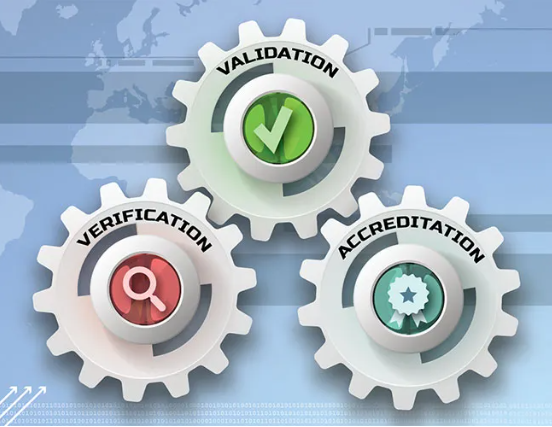VV&A the Right Way
The Importance of VV&A in DoD Modeling and Simulation
The increasing reliance on modeling and simulation (M&S) to sell off system requirements has proven to be an effective strategy for reducing costs and accelerating schedules in DoD acquisitions. However, as M&S tools grow in fidelity, complexity, and sheer number, the process of Verification, Validation, and Accreditation (VV&A) has become a significant challenge. Ensuring the credibility of M&S results is critical since using unverified or invalidated models introduces risk and rework. DoDI 5000.61 and MIL-STD-3022 establish policies for VV&A, and emphasizes:
M&S tools must undergo Verification & Validation (V&V) throughout their lifecycle to ensure accuracy and reliability.
M&S must be accredited for a specific, intended use before they can be employed in decision-making processes.
M&S assessments must have transparency and repeatability.
These policies create a structured approach to evaluating M&S credibility but also introduce a substantial workload for both government and contractor organizations.
Ideally, the government (as an independent third party) would conduct VV&A for every model and simulation used to verify requirements. However, validating every instance is impractical. This leads to a fundamental question; how can the government ensure that all requirements verified using M&S have undergone proper VV&A?
This can be done by starting an effective VV&A Process. Key steps include traceability of requirements to M&S, a Requirements Verification Matrix (RVM), a traceable verification method, and for the government to review and approve traceability. An RVM clearly maps which requirements are being verified by the contractor. A traceable verification method ensures M&S is appropriately applied and justified. Lastly, the government review and approval accepts the M&S results for requirement verification.
Given the impracticality of VV&A for every model and scenario, prioritization is paramount. The program should identify baseline models and simulations that cover a broad set of requirements efficiently. They should focus VV&A efforts on high-impact models that play a critical role in requirements verification. A structured accreditation process should be integrated into early development stages to avoid late-stage surprises and costly rework. Automation and standardized VV&A documentation (per MIL-STD-3022) should be used to streamline reviews and approvals.
To give a quick example, a space-based system with 24 constellation configurations may have hundreds of requirements tied to various M&S tools. Instead of accrediting each configuration separately, a baseline subset of key constellation configurations could be identified, encompassing the required fidelity while minimizing redundant VV&A efforts. These key subsets may have been accredited previously, and only a few would need to be modified and reaccredited to meet the intended use cutting the workload significantly.
Modeling and simulation remain essential tools in modern DoD acquisition and operational planning. Their effectiveness and value are a function of the credibility of their results. By implementing structured VV&A processes, and fostering collaboration between the program, we can strike the right balance between cost-effective M&S use and ensuring trust in the systems being delivered to the warfighter. At the end of the day, VV&A is not just a compliance requirement it is a mission-critical necessity to ensure that the systems supporting our warfighters perform as expected when it matters most.

